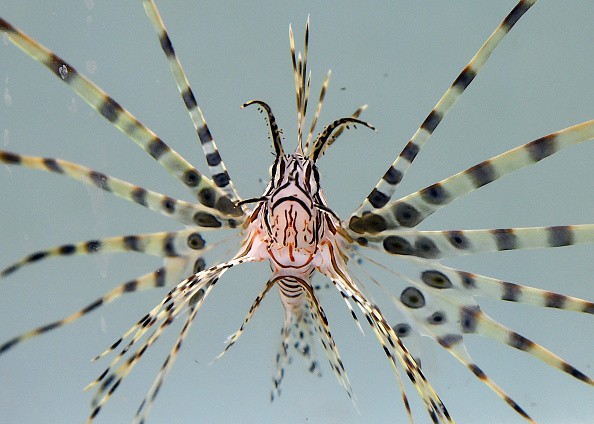Researchers reveal management of the predatory fish is critical to safeguarding Brazil's coral reefs and marine biodiversity.

The Arrival of Lionfish
Since their arrival to the northern Atlantic Ocean less than 30 years ago, lionfish have become one of the most widespread and insatiable invasive species in no time, impacting marine ecosystems negatively - mostly coral reefs - from the northeast coast of the United States to the Caribbean Islands.
An international research team including the California Academy of Sciences presents four new lionfish records off the coast of Brazil in a new study, verifying the invasion of the predatory fish into the South Atlantic for the first time.
Their discoveries, released on the 3rd of June in Biological Invasions, explained how the lionfish may have entered the area, and hold crucial insights on how Brazil's diving and fishing communities can aid in managinging the invasion before it possibly devastates local ecosystems.
Invasion of Lionfish in the Atlantic Ocean
Luiz Rocha, an Academy Curator of Ichthyology and also a study co-author said: "For some time it was unclear whether or not they would reach the South Atlantic, now that we know the lionfishes are here, it is important that we discover how they appeared and work with local communities to keep the population in check.
"If left uncontrolled, lionfish could have a great impact on local species, especially those that exist only in the reefs surrounding the oceanic islands in Brazil.
Sporting maroon stripes and over a dozen venomous spines, lionfish have been a staple in the hobbyist aquarium trade for a long time. Like other well-known aquarium fish, however, they are irresponsibly freed into the wild at times.
Indeed, there is a possibility that the invasion of lionfish in the Atlantic Ocean started that way. Once they arrive in new waters, lionfish can rapidly disturb local ecosystems and spread to other locations. Because of their broad diet, unique hunting style, absence of natural predators, and timeless reproduction of buoyant eggs that can journey far distances on ocean currents, lionfish have spread rapidly than any other invasive marine species.

Mesophotic Reefs
In spite of those traits, lionfish have been apparently absent in the South Atlantic - an event that the researchers ascribe to the northerly flowing currents at the oceanic border between Brazilian and Caribbean waters.
But a local diver took a picture of a lionfish swimming off the southern coast of Brazil in 2015 and notified the researchers, who 11 months later discovered and took the specimen confirming the species has expanded into Brazil.
After that first discovery, the researchers - with the assistance of local fisherman and divers -were able to track down three more lionfish in Brazil's waters: two from deep coral reefs referred to as mesophotic reefs and one from reefs close to the Fernando de Noronha Archipelago about 200 miles off the northeastern coast of the country.
Related Article : Killer Machines? Robots Could Wipe Out Invasive Lionfish in the Atlantic
For more news, updates about lionfishes and similar topics don't forget to follow Nature World News!
© 2025 NatureWorldNews.com All rights reserved. Do not reproduce without permission.





